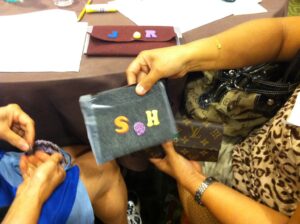The Myth of Originality
First, let’s debunk the myth of originality. Many creators labor under the illusion that every idea must be entirely new and groundbreaking. But in reality, every piece of art, music, writing, or invention is a remix of what came before. Shakespeare borrowed plots from older works, Picasso copied from his contemporaries, and modern musicians sample beats and melodies from past hits. Creativity is often about recombining existing elements in new ways.
The Art of Stealing Like an Artist
In his best-selling book, Steal Like an Artist, Austin Kleon argues that nothing is original. He encourages artists to embrace the act of copying—not in the sense of plagiarism but as a means of learning and growing. Kleon suggests that by copying the work of others, you can internalize techniques, styles, and ideas that will eventually blend with your own unique voice.
Learning Through Imitation
Imitation is one of the most effective ways to learn. Think about how children learn to speak: they mimic the sounds and words they hear from adults. Similarly, when you’re stuck in a creative rut, imitating the work of someone you admire can help you understand their process and techniques. This, in turn, can spark new ideas and insights.
Consider a writer facing a blank page. Instead of agonizing over what to write, they could start by copying a passage from a favorite book. This exercise can help them get into the rhythm of writing, making it easier to transition into their own words. Similarly, an artist might replicate a famous painting to understand the use of color, composition, and brushwork.
Finding Your Own Voice
While imitation is a great starting point, the goal is not to remain a copycat forever. As you practice and learn from others, you’ll start to develop your own style and voice. This process is akin to a musician learning to play cover songs before creating their own music. By studying the masters, you build a foundation that supports your unique expression.
Overcoming the Fear of the Blank Page
One of the most paralyzing aspects of creative block is the fear of the blank page. The vast emptiness can feel daunting, but starting with someone else’s work can reduce that intimidation. Once you have something on the page, even if it’s not originally yours, you can begin to tweak, edit, and mold it into something new. This can break the inertia and get your creative juices flowing.
The Ethical Way to Copy
Of course, it’s essential to approach copying ethically. Plagiarism—passing off someone else’s work as your own—is a serious offense. The goal is not to steal but to learn and draw inspiration. Always give credit where it’s due and use the work of others as a stepping stone rather than a final product.
Turning Inspiration into Innovation
Copying someone else doesn’t mean you’re unoriginal. On the contrary, it can be the first step towards innovation. By standing on the shoulders of giants, you can see further and create something that’s uniquely yours. Many great innovations come from tweaking and improving existing ideas.
Consider how Steve Jobs famously borrowed ideas from Xerox to develop the Macintosh, or how the Wright brothers studied birds to invent the airplane. Innovation often starts with imitation, leading to breakthroughs that wouldn’t have been possible otherwise.
Practical Steps to Start Copying
1. Identify Your Heroes: Choose creators whose work you admire and want to learn from. Study their techniques, styles, and processes.
2. Practice Deliberate Imitation: Set aside time to copy their work. If you’re a writer, try rewriting a favorite passage. If you’re an artist, replicate a famous painting.
3. Analyze and Reflect: After copying, take time to reflect on what you’ve learned. What techniques did you discover? How can you incorporate these into your own work?
4. Mix and Match: Combine elements from different sources. This blending of ideas can lead to unique and innovative creations.
Creative block can be a formidable foe, but by embracing the practice of copying, you can break through barriers and unlock new potential. Remember, imitation is not the end but a means to an end. It’s a tool for learning, growing, and ultimately discovering your unique voice. So, the next time you find yourself staring at a blank page, take a cue from the greats: start by copying someone else, and watch as your creativity takes flight.












